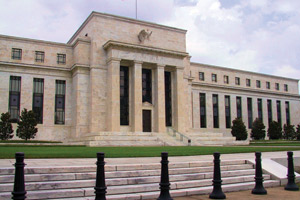Friday’s big stories were the April jobs report and the release of the Obama administration’s “stress tests” for troubled banks. The jobs report showed the economy lost 539,000 jobs in April, fewer than economists expected and fewer than were lost in March. And even though they showed that US banks are undercapitalized by some $75 billion, the stress test results were “far more upbeat than many in the industry had feared,” according to the New York Times. The White House and the main stream media are spinning both the stress tests and the jobs report as good news. But some observers aren’t so sure. Our own Nomi Prins, a former banker herself, writes:
Despite Treasury Secretary Tim Geithner’s declaration that the results are “reassuring,” the banks are likely in worse shape than the tests suggest. Just because a bank avoided the capital penalty box doesn’t mean it’s healthy. Some, like Goldman Sachs, are investment banks that converted to bank holding companies last fall in order to access federal money, and received a two-year grace period to standardize their books with other banks. And some happen to enjoy a symbiotic relationship with the Fed, like JPMorgan Chase, whose last two takeovers (of Bear Stearns and Washington Mutual) were government-funded. JPMorgan Chase’s stock was one of the biggest losers after TARP began, yet its tests indicated that it has somehow taken care of its capital needs just fine.
Those banks that were ordered by the Fed to come up with more capital may also be shakier than Geithner would have us believe. The two biggest problem banks, Citigroup and Bank of America, spent last week frantically trying to persuade the Fed that they didn’t need extra capital, although they both posted significant increases in losses from loans in their most recent quarterly results. Bank of America’s CEO Ken Lewis insisted, “We absolutely don’t think we need additional capital.” Guess what? His bank needs $33.9 billion, according to the government. The glaring mismatch between the banks’ rosy public statements and the Fed’s (gentle) testing suggests a troubling reluctance to face hard facts about the real condition of the banking system. Too many numbers are open to interpretation and debate, which usually means that things are worse than they seem.
You should read Nomi’s whole article. But she’s not the only one doubting Geithner’s rosy outlook. Economist Dean Baker, who we keep going back to because he saw the housing bubble, writes over at the American Prospect that while the stress tests results could be accurate, there are a lot of reasons why they might be painting an over-optimistic picture. Mortgage fraud could cause default rates to be far higher than expected, weakening the banks’ bottom lines. House prices could, and probably will, fall further than the Fed’s worst-case scenario. That will also hurt bank balance books. And the economy is on track to have a significantly worse unemployment rate than the Fed’s worst case scenario assumed—over 10 percent in 2010, Baker says. What does all that imply? An increase of some $120 billion in the amount of money the banks will need. “[I]nstead of having to raise $75 billion, these banks would have to raise $195 billion. That’s a qualitatively different picture,” Baker writes.
So if things really are likely to end up much worse than the Fed assumes, why all the optimism? “It is hard not to conclude that these stress tests and certainly the PR campaign around them, were intended to paint as positive a picture as possible of the banks’ financial condition,” Baker writes. Indeed.











